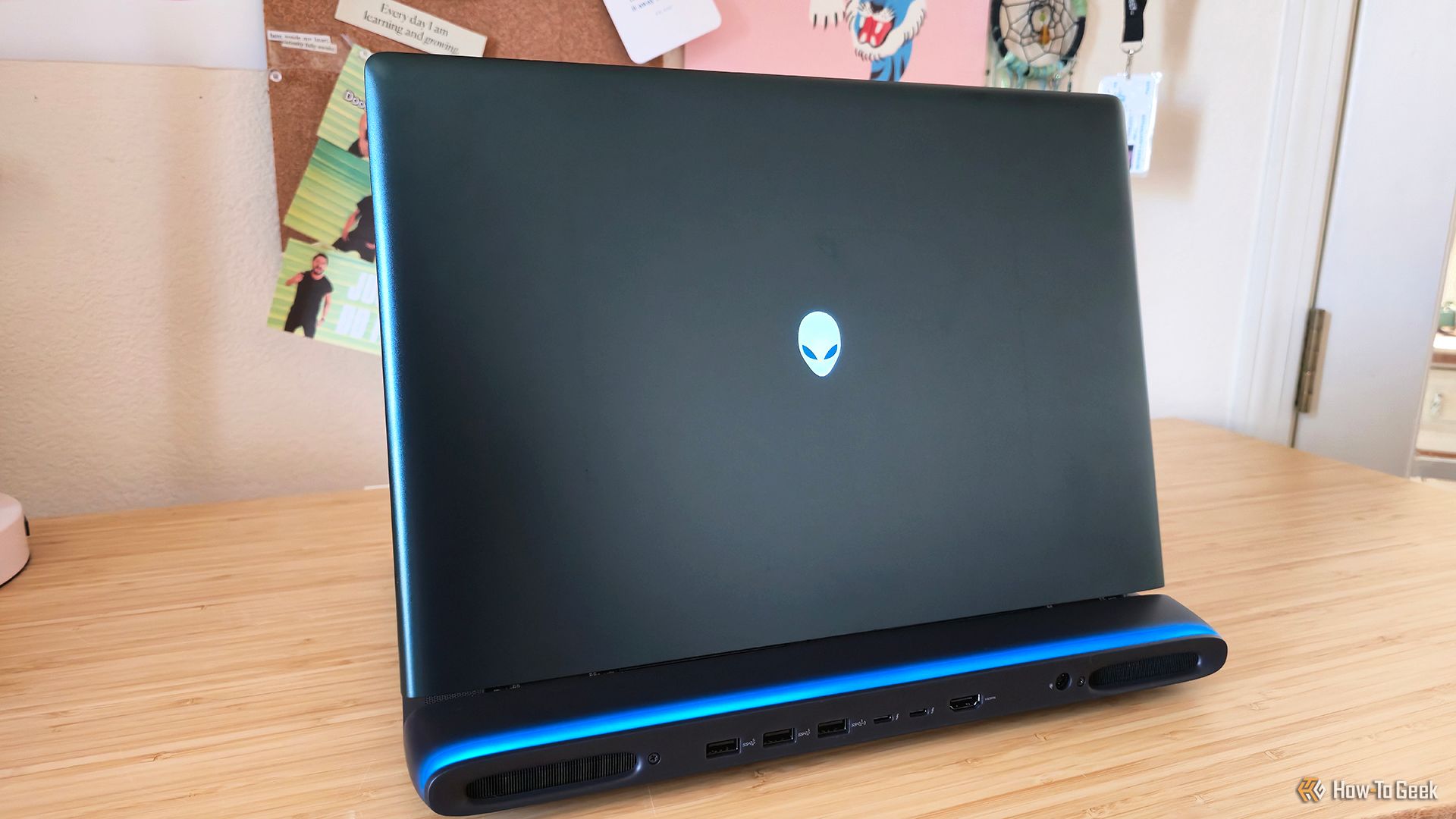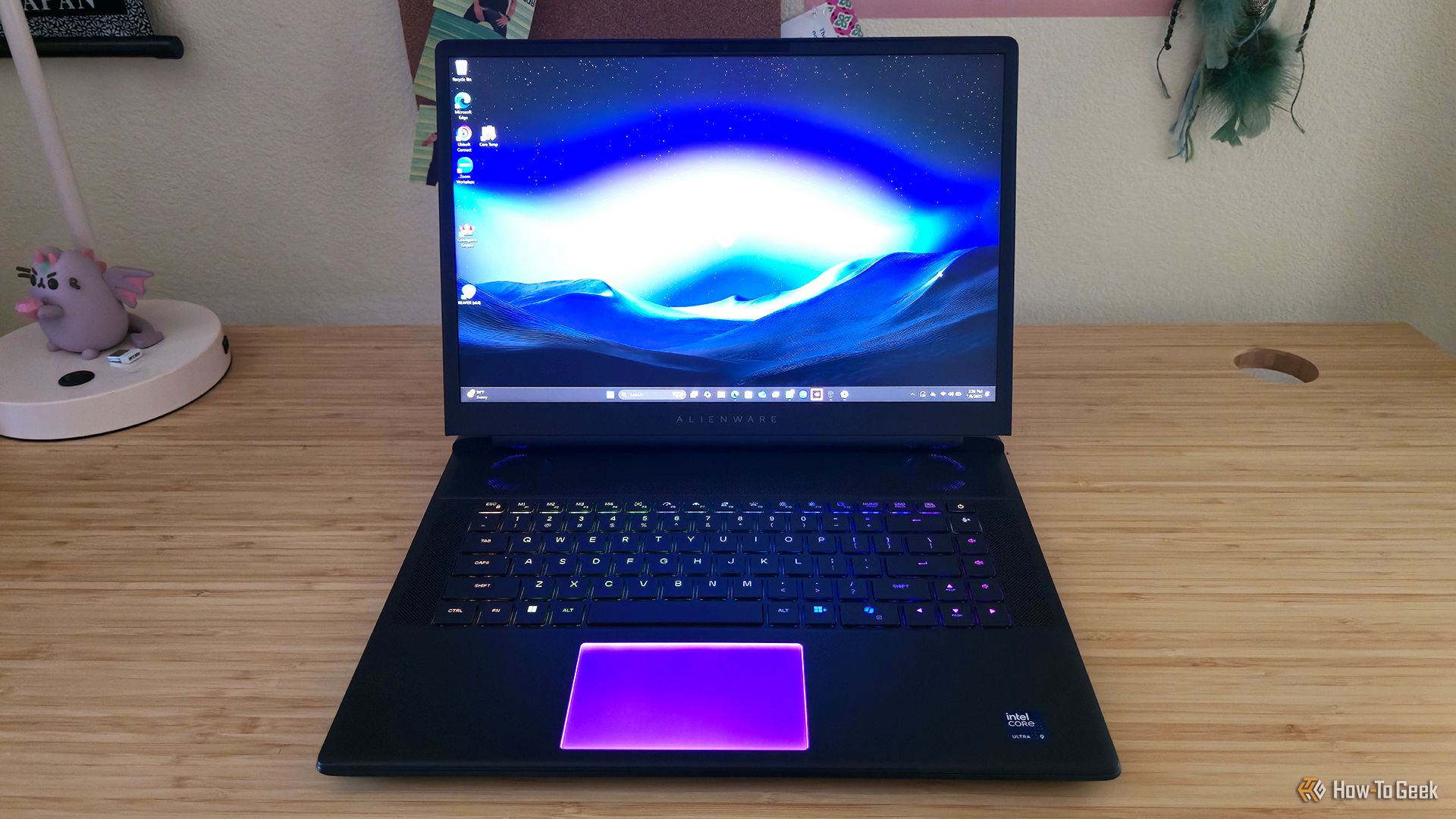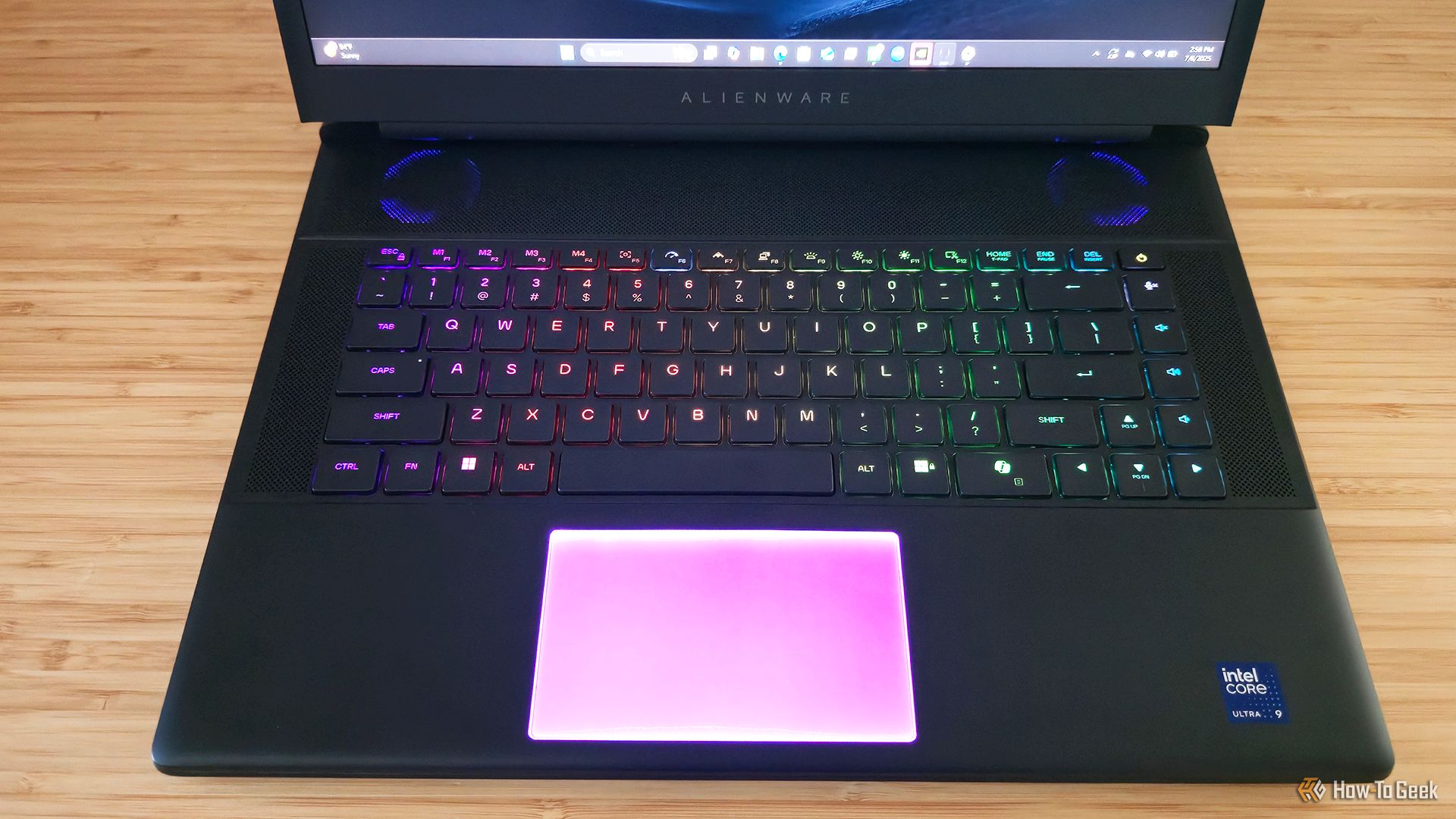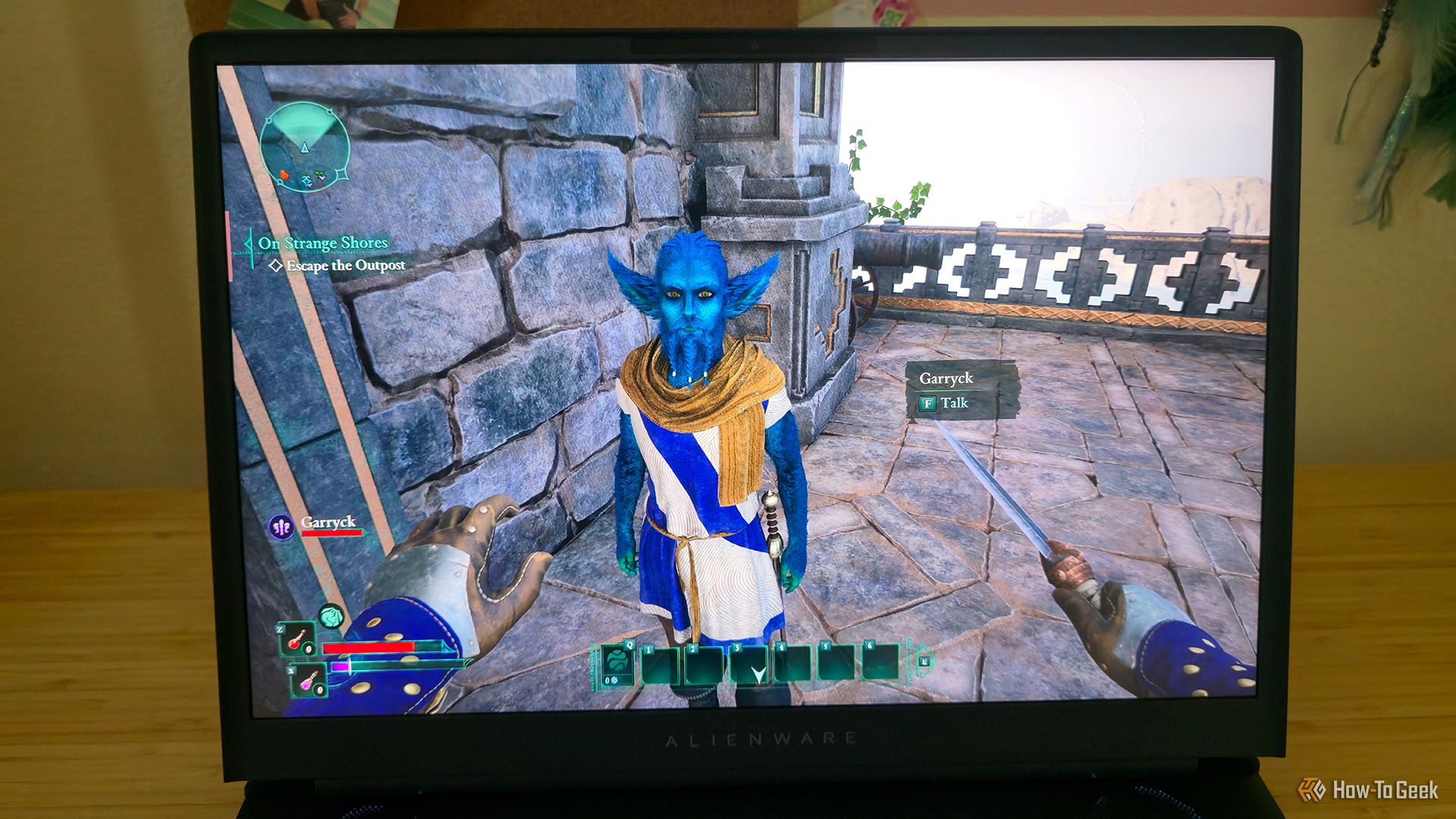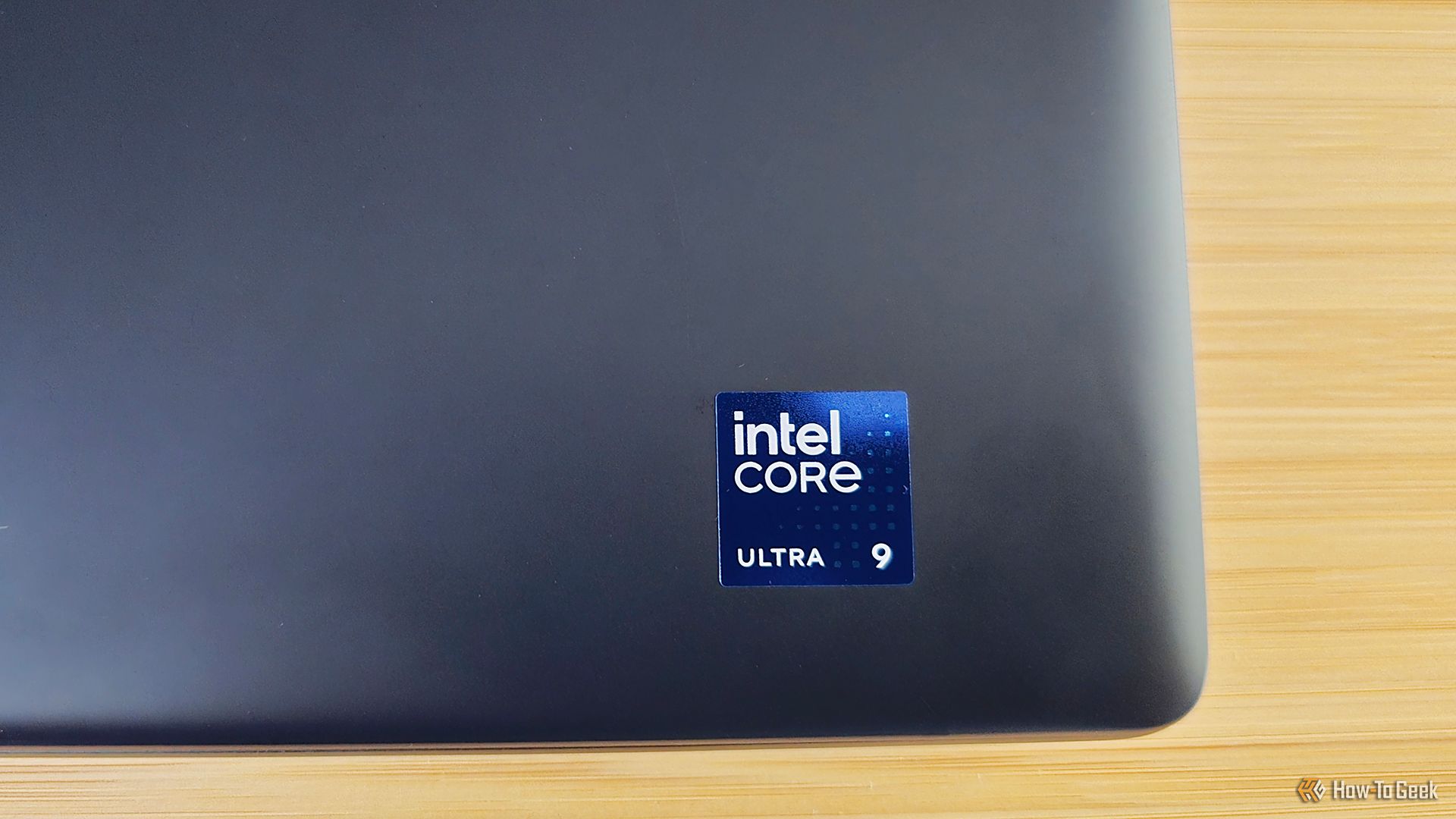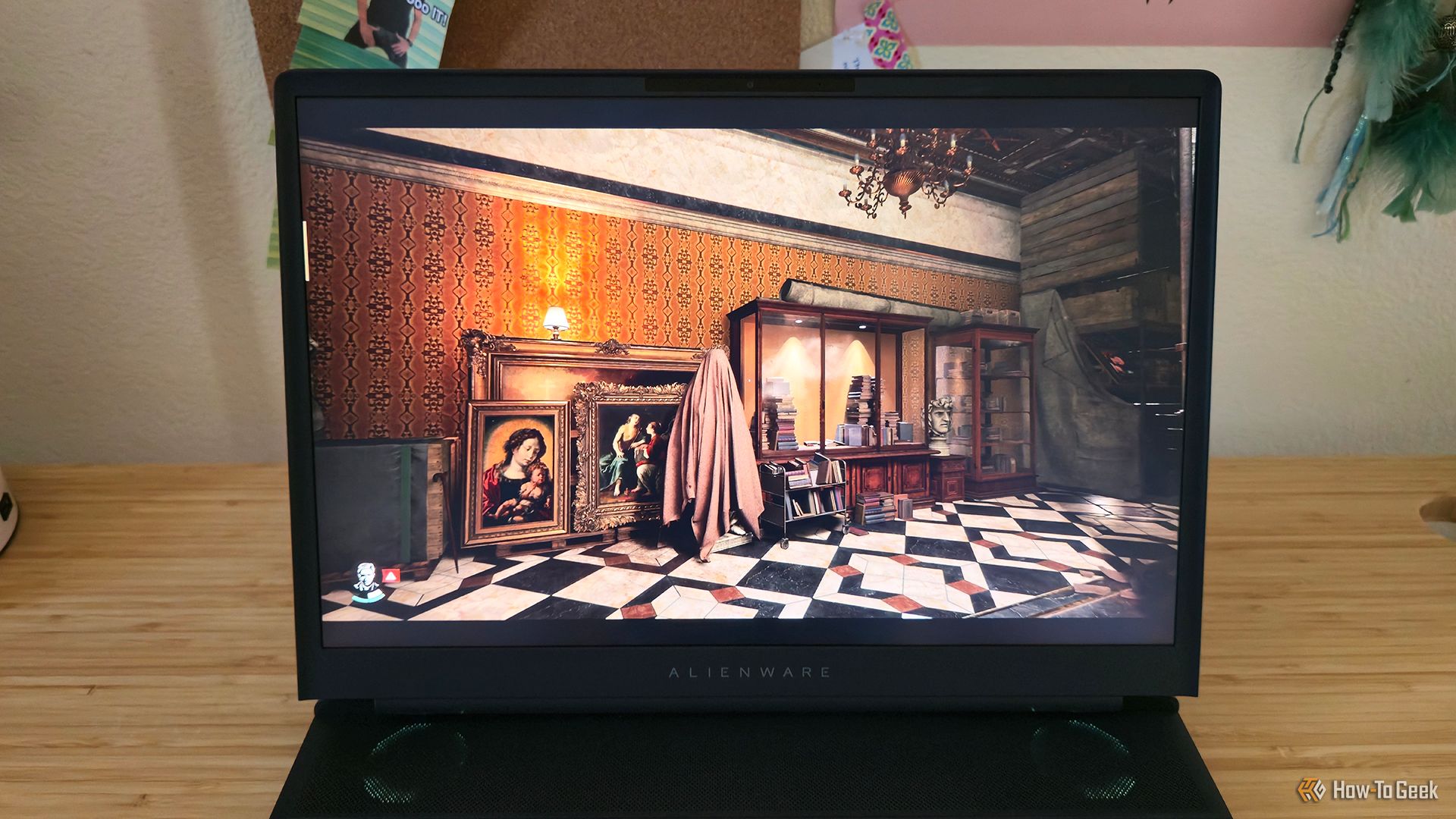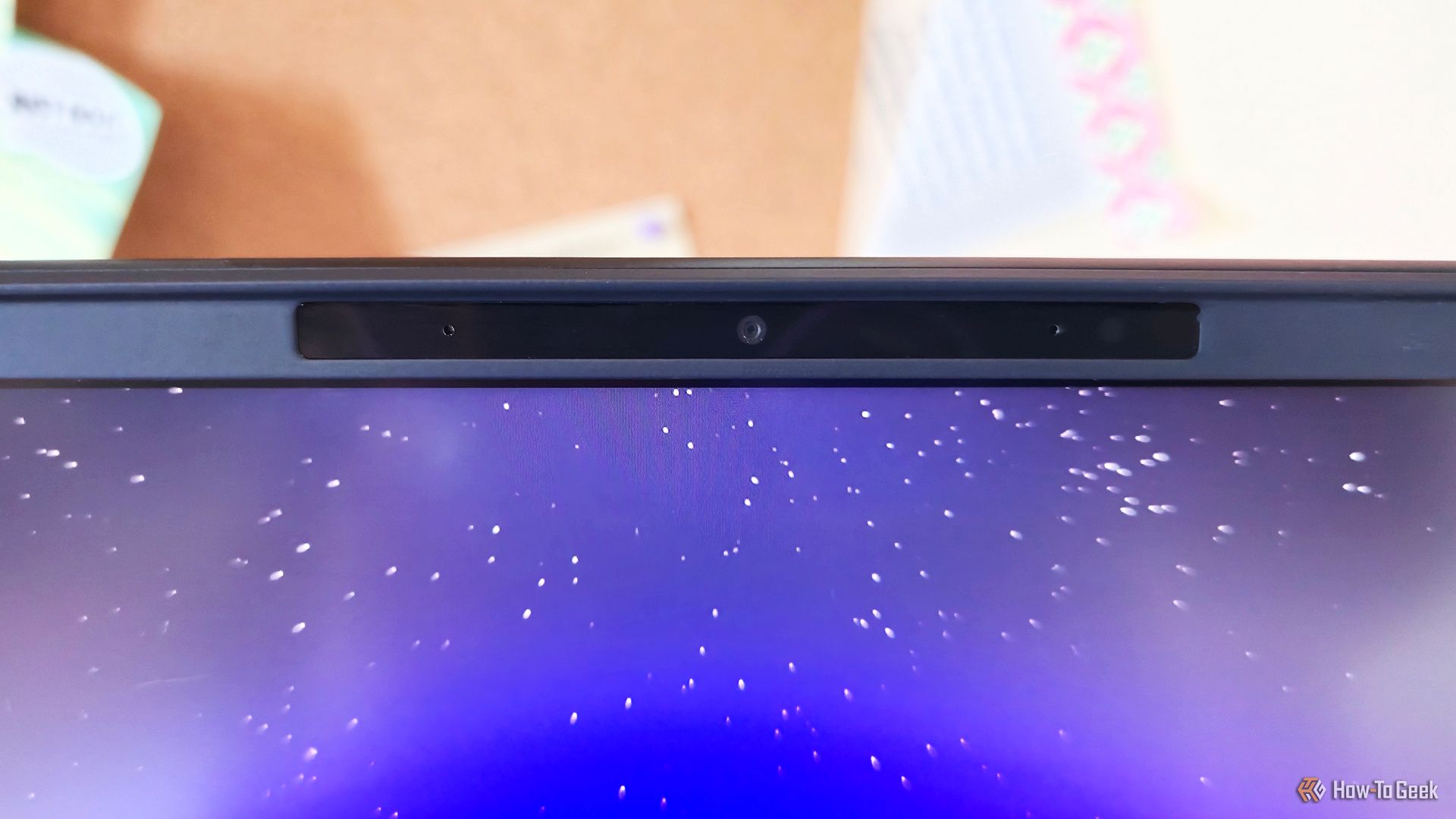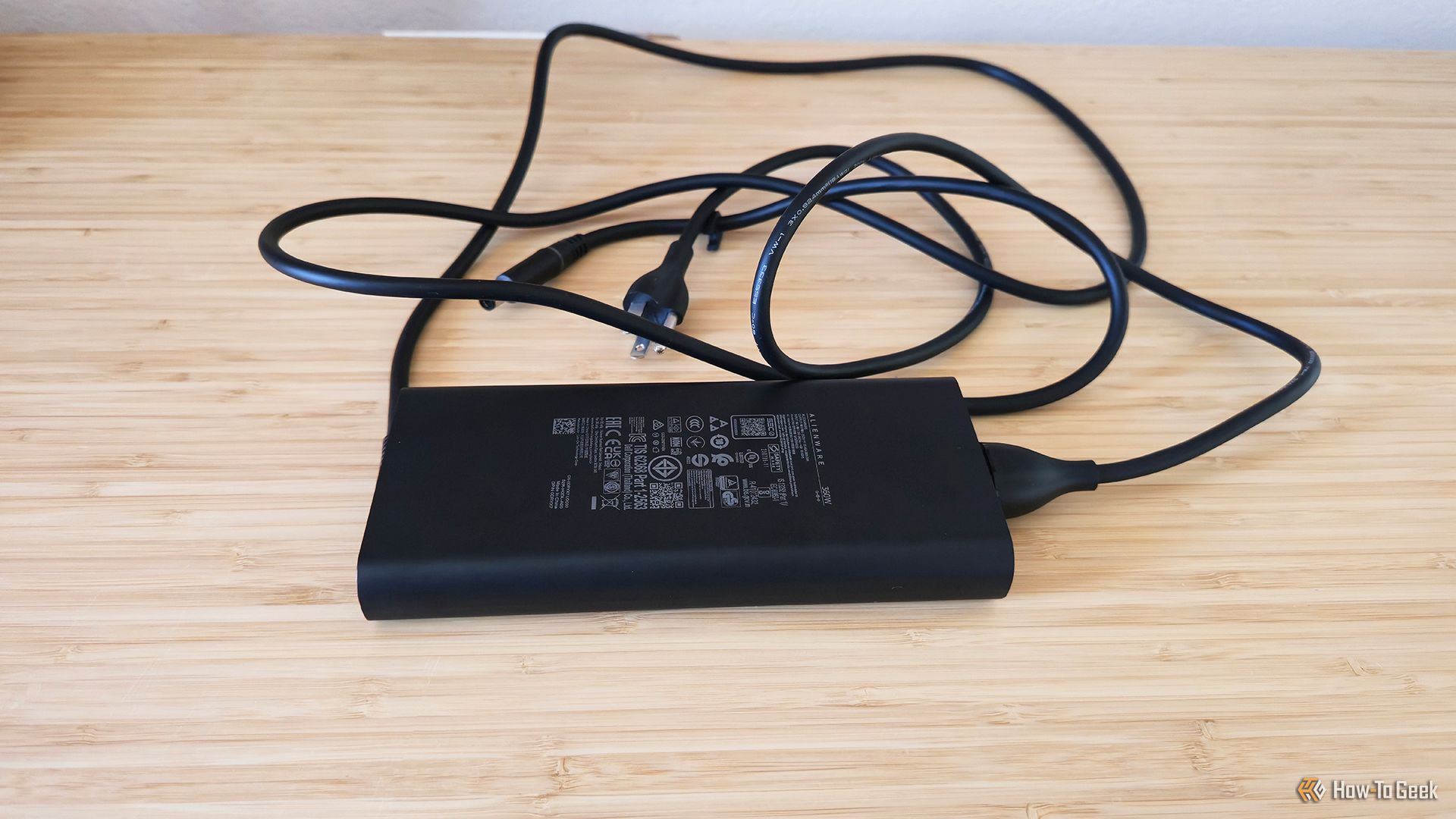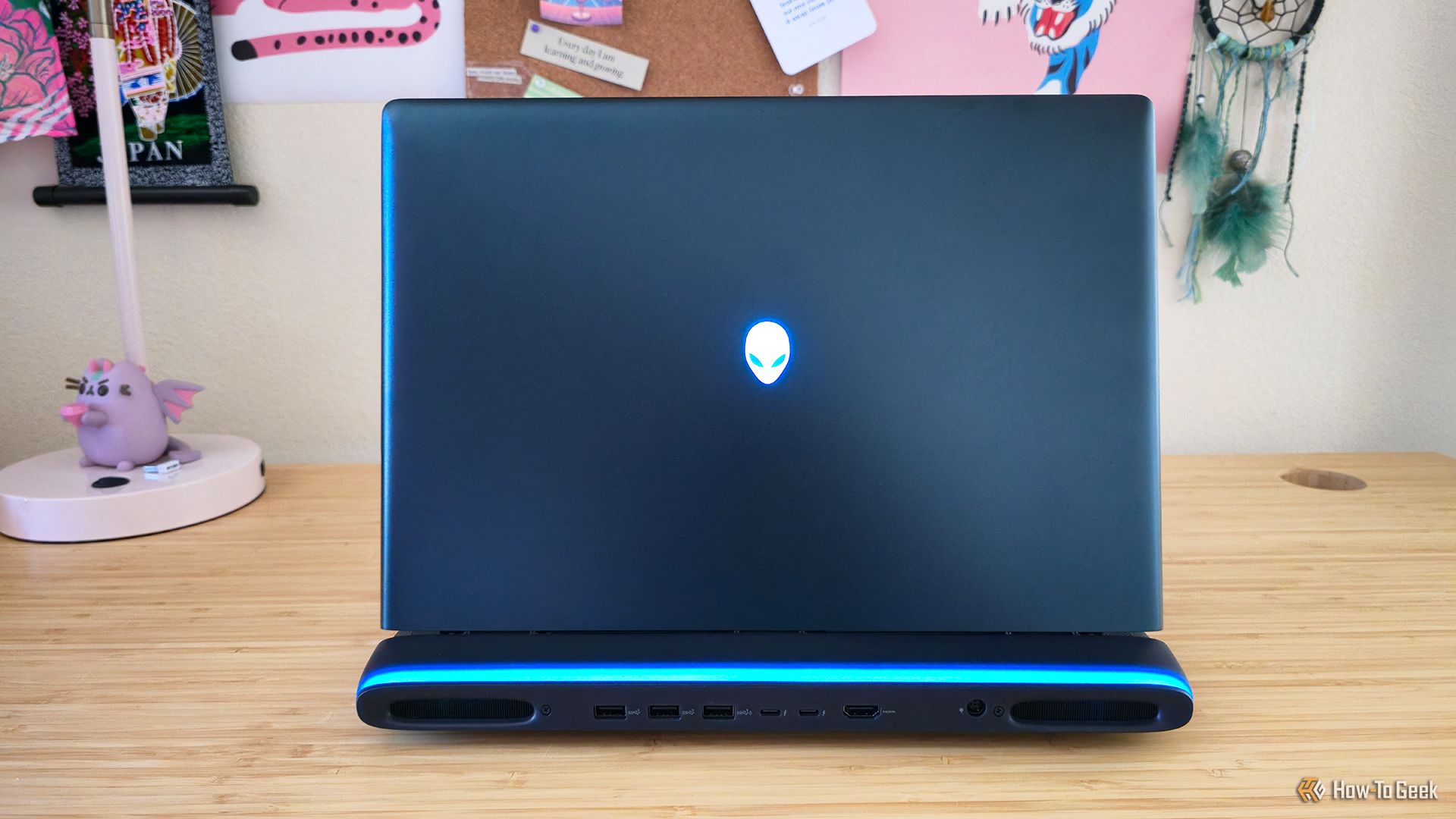As a follow-up to the Alienware m16, the Alienware 16 Area-51 (2025) hits a solid home run. This gaming laptop is a true desktop replacement, with a sleek design, a new vapor chamber, and an outstanding CPU and GPU combo that can handle resource-intensive gaming, as well as most work tasks.
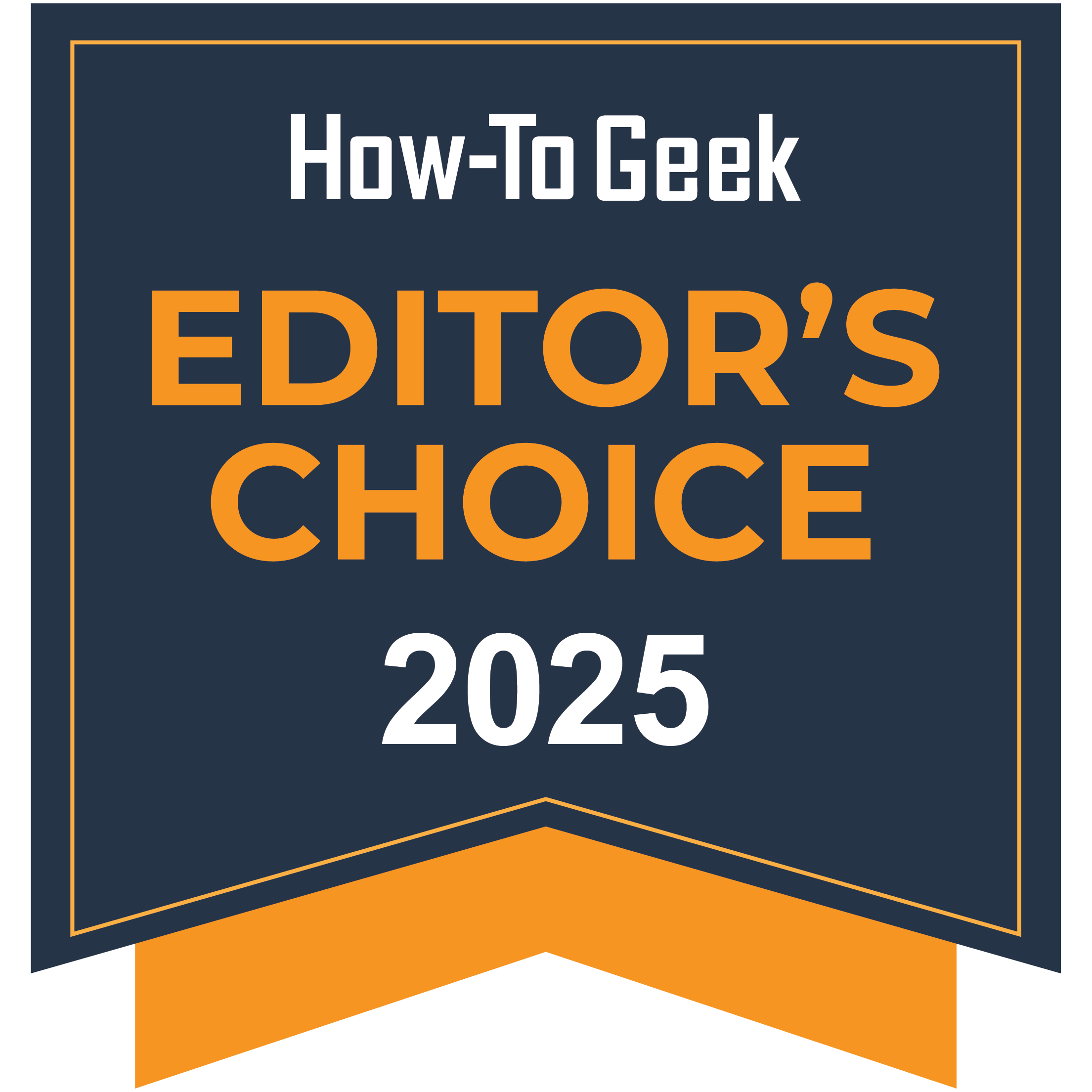
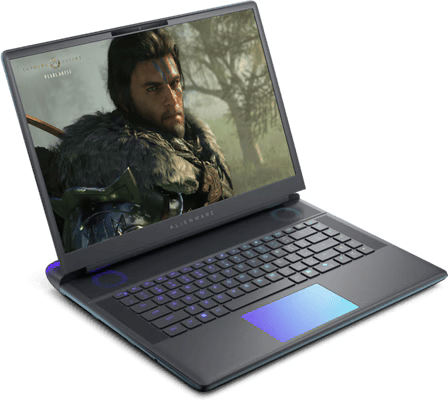
Alienware 16 Area-51 (2025)
- Operating System
- Windows 11 Home (Pro upgradable)
- CPU
- Intel Core Ultra 9 275HX (24-Core, 36MB Total Cache, 2.7Ghz to 5.4GHz)
- GPU
- NVIDIA GeForce RTX 5080 16GB GDDR7
- RAM
- 32GB DDR5 RAM (6400 MT/s)
The Alienware 16 Area‑51 (2025) is a powerhouse gaming laptop featuring an Intel Core Ultra H-series CPU, an NVIDIA RTX 50-series GPU, and a mechanical Cherry MX keyboard, all wrapped in a bold, liquid-teal chassis. Its brilliant display packs a punch with an up to 240 Hz refresh rate, a 2,560 x 1,600 resolution, and an ultra-bright 500 nits. Its specs make it a legitimate desktop replacement, with a few small limitations.
- Gorgeous QHD+ Display with 240Hz refresh rate
- CherryMX Ultra-low-profile keyboard feels great
- Intel Core Ultra 9 CPU and NVIDIA GPU deliver speedy processing
- Sleek, stylish chassis that feels comfortable
- No OLED option
- Fan noise can overwhelm the speakers
- Battery hog
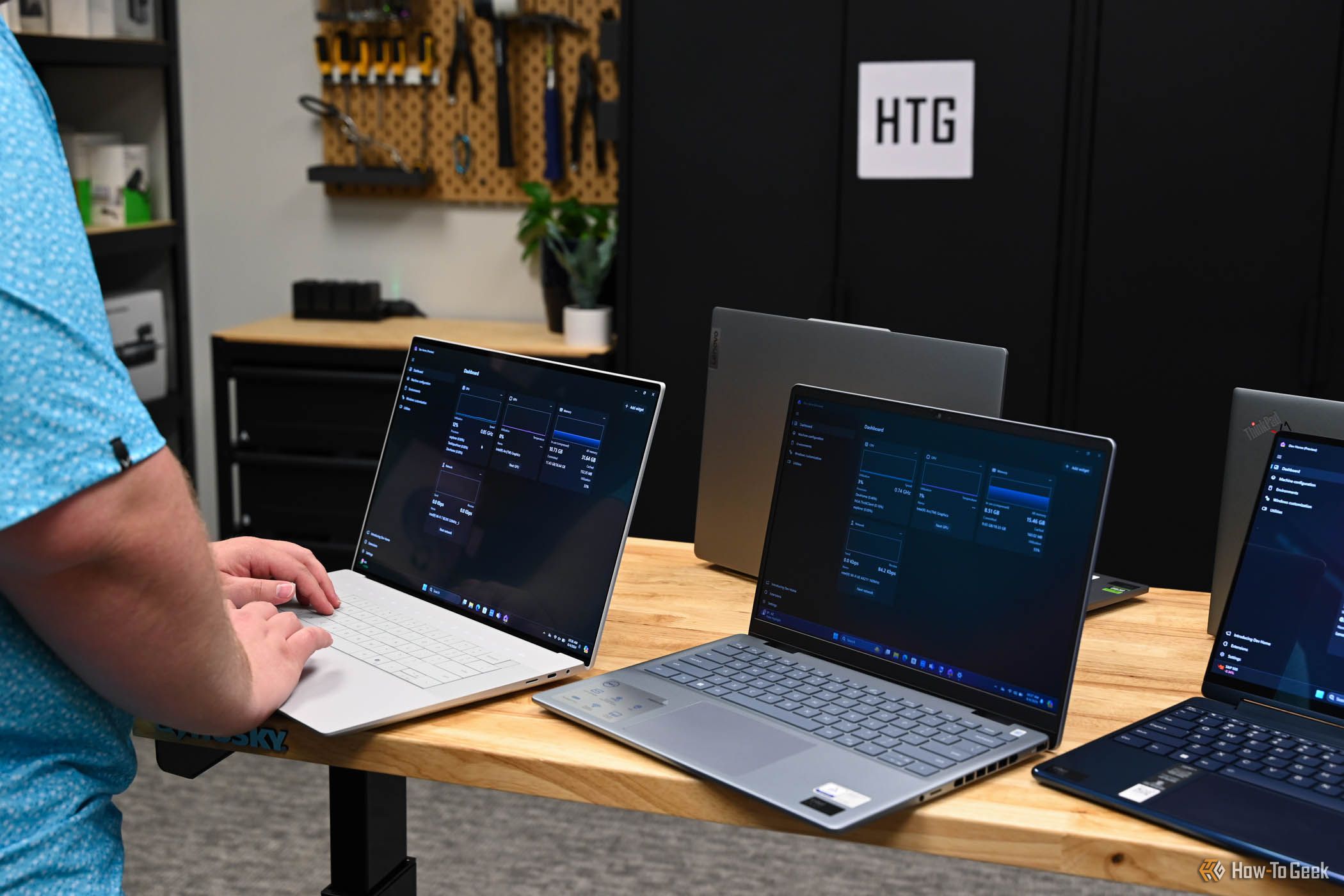
How We Test and Review Products at How-To Geek
We go hands-on with every product to ensure it's worth your time and money.
Price and Availability
The Alienware 16 Area-51 (2025) gaming laptop is now available from retailers such as Dell and Best Buy. You can purchase a preset configuration or customize one to suit your needs. While my configuration (Intel Core Ultra 9 275HX, NVIDIA RTX 5080, 32GB RAM, 1TB storage, CherryMX ultra-low-profile keyboard, 4K webcam) has a suggested retail price of $3,399.99 on Dell, I've seen it as low as $2,899.99 from the retailer. On Best Buy's website, a slightly different configuration (2TB storage, FHD webcam, RTX 5070) sells for $3,099.99. The lowest configuration sells for $1,999.99 on Dell.
Specifications
- Operating System
- Windows 11 Home (Pro upgradable)
- CPU
- Intel Core Ultra 9 275HX (24-Core, 36MB Total Cache, 2.7Ghz to 5.4GHz)
- GPU
- NVIDIA GeForce RTX 5080 16GB GDDR7
- RAM
- 32GB DDR5 RAM (6400 MT/s)
- Storage
- 1TB NVMe M.2 PCIe Gen 4 SSD
- Battery
- 96Whr Lithium Ion Battery with Alienware Battery Defender technology
- Display (Size, Resolution)
- 16in QHD+ (2,560 x 1,600) 240Hz (3ms, 100% DCI-P3 gamut, 500 nits, ComfortView Plus, NVIDIA G-SYNC + Advanced Optimus)
- Camera
- 8MP UHD HDR IR (3840 x 2160 resolution) camera
- Speakers
- 2 x 2W woofers, 2 x 2W tweeters with Realtek Smart Amplifier ALC1708 (Woofer), RealTek amplifier ALC3329 (Tweeter)
- Colors
- Liquid Teal
- Ports
- Left Side Ports: 1 X 3.5mm microphone/headphone jack, 1 x Full-sized SD card (push-pull) Rear Ports: 2 x USB Type-A 3.2 (Gen 1 5Gbps), 1 x USB Type-A 3.2 (Gen 1 5Gbps with PowerShare technology), 2 x Thunderbolt 5 ports (depending on GPU selection), 1 x HDMI 2.1
- Dimensions
- Height (max): 1.12 (28.50) x 14.37 (365.00) x 11.41in (290.00mm) Height (front): 0.85in (21.60mm)
- Weight
- 7.49lb (3.40kg)
- Brand
- Dell / Alienware
- Model
- AA16250
- Adaptor and Battery
- 360W Small Form Factor GaN FET adapter, integrated 96Whr lithium ion battery
- Card Reader
- Yes; Full sized SD card slot
- Keyboard
- CherryMX Ultra-low-profile keyboard
- Display type
- Fast IPS (non‑touch, matte finish)
- Audio
- Integrated High-Definition Performance Audio
- Connectivity
- Intel Killer Wi-Fi 7 BE1750 (2x2 320Hz) MIMO 802.11be Wireless LAN; Bluetooth 5.4
- Box contents
- 1 x Alienware 16 Area-51 (2025) laptop, 1 x 360W adapter, paper materials
A Stunning Color and Sleek, Gamer-Forward Design
Dell's clear target for the Alienware 16 Area-51 (2025) is a subset of gamers who don't want the run-of-the-mill look. When I pulled this laptop out of the box, I let out an audible gasp. Yes, I am weakened by aesthetics. The Area-51 is the gaming laptop you want to show off to your gamer friends and post braggadocious pictures and videos of—just because.
From a looks standpoint, I couldn't ask for more here. The exterior has a smooth appearance, with a dark, durable anodized aluminum in an iridescent teal green (dubbed "Liquid Teal") reminiscent of an alien life form, which is obviously the point here. But before I get into logistics, let me say that this laptop is not just a stunner—the design choices are specific to ergonomics and performance, too.
The back of the Alienware 16 Area-51 (2025) has a backlit Alienware logo, a thick back bar that houses almost all the ports, and ethereal, glowing lighting around the bar. When you open the laptop, there's a discreet webcam and microphone housing centered at the top, a 16-inch IPS display below, and an Alienware logo on the frame. The base houses the fans, which are also stylishly lit.
Below the ventilation system is the CherryMX ultra-low-profile keyboard (which has per-key RGB), and on either side of the keyboard are the speakers (two 2W woofers and two 2W tweeters). Finally, there's the sizable touchpad (about 4.5 by 2.6 inches) located underneath the keyboard. This touchpad also lights up when in use.
Flipping the laptop over to the bottom reveals what Dell calls the "Cryo-chamber," aka the ventilation system, which has a Gorilla Glass viewing window so you can see the inner workings of the beast. For some reason, this feature really excited me. Probably just because it looks darn cool. Pun intended? Bad jokes aside, Dell claims this design has increased airflow, and they've utilized the largest fans to date in a gaming laptop.
The main reason for the increase in ventilation is, obviously, performance, but also to lessen the noise of the fans. I'm not entirely sure how much quieter this fan noise is compared to past Alienware iterations, but I've got more to say about that later. Dell claims it's 15% less than previous models, thanks to "thermal modules that carry high amounts of copper to dissipate heat."
What I love about this design, beyond its gorgeous color and thoughtful lighting integrations, is how incredibly comfortable it is to game on. Dell made several smart decisions here. The hinge, for instance, is hidden, making the whole exterior look sleeker while also making the lid easier to open. The silhouette is also slightly rounded, which feels better if you're gaming with this heavy sucker on your lap.
Speaking of weight, the Area-51 weighs up to 7.49 pounds. Because this is a desktop replacement, its weight doesn't bother me. But, most people wouldn't want to travel with this laptop. If you're looking for a gaming laptop that's lighter, look elsewhere.
A Bevy of Ports
Most of the important ports are on the back of the Alienware 16 Area-51 (2025). Because of their location, I could easily have several things plugged in and comfortably game or work without cords getting in my way.
The sides do include a couple of things, though. Both have ventilation windows, and the left side houses the full-sized SD card port for additional storage and a 3.5-mm microphone/headphone combo jack.
At the back are three USB-A ports (3.2 Gen, 1.5Gbps), and one of those has PowerShare technology. There are also two USB-C Thunderbolt 5 ports and one HDMI 2.1 port.
Sadly, there is no Ethernet port. This might be a problem if you're an extremely competitive gamer and really want to skip the wireless connection for more stable gameplay. I find it a little strange that the Ethernet option isn't present, but more often, at this price point, I haven't seen them included. Not even the Razer Blade 16 (2025) has one. Nitpicking aside, you can always get a USB-C hub to address this issue.
CherryMX Keyboard and Responsive Touchpad
One of my favorite features of Alienware 16 Area‑51 (2025) is its CherryMX ultra-low-profile mechanical keyboard. This keyboard delivered a pleasantly tactile experience, with responsive typing and a typefeel that felt geared towards gaming without being terrible for word-processing tasks like writing emails and drafting articles. It's also well-spaced and allows plenty of room to type comfortably, with a fairly sizable wrist rest area (that also has a subtle, comfortable curve).
I rarely made typos or accidently hit the wrong keys during crucial game moments. The 1.8mm travel of these keys and short actuation allowed me to speedily (and precisely) type game commands. Although it isn’t the same typefeel I’d get from my Keychron Q6 Pro, I still got a similar feel to full-sized switches without the bulk.
And, of course, the keyboard boasts per-key RGB lighting, which you can customize in the preinstalled Alienware Command Center. The lighting on the touchpad, back bar, and Alienware logo is also customizable. This is similar to past Alienware gaming laptops like the Alienware x16 R2.
In addition, the keyboard features the usual Fn keys, a Microsoft Co-Pilot key, and a far-right vertical row with volume keys, a microphone key, and the power button.
The touchpad is fairly responsive as well, with a matte texture that's easy to glide your fingers over. While I rarely had problems with the touchpad, I did experience the occasional stick during gaming, which seems to be due to the touchpad requiring a bit more pressure than I'm used to.
QHD+ IPS Display Delivers Immersive Graphics
Although I would've preferred that Dell offered an OLED display option for the Alienware 16 Area-51 (2025), its QHD+ (2,560 x 1,600) IPS display does the job well. And that's an understatement. It lacks some of the vibrant contrast in blacks and darker graphics that come with an OLED, but overall this high-end panel blew me away. Packed with a 240Hz refresh rate, 500nits of brightness, NVIDIA G-Sync, and 100% DCI-P3 color gamut, I could stream movies, play games, or edit photos with an immersive color spectrum and sharp contrast.
The QHD+ is more than enough to deliver graphics that wow. When watching 4K YouTube videos for testing purposes, I was able to discern the minutest details, such as individual hairs on a lion's mane and chin, the contrasting frizzy and coarse texture of an orangutan's fur and face (respectively), and the wooly fur on the haunches of buffalo. Whether I watched videos of architecture or landscapes, those details popped as well, with a particularly nice contrast in cool tones like green and blue. I was even able to make out the individual threads in a creator's embroidered blouse. Movies like Interstellar shone on this display, even in coldly-lit space scenes.
Similarly, I was pleased with the vibrant details in game graphics. In Avowed, for instance, the character Garryck's vibrant blue fur and gold eyes were crisp rather than muddy. Cyberpunk 2077 shone in all its gritty, neon glory, too, with incredibly detailed ray tracing that was the epitome of eye-candy.
Whether I was gaming, working, or streaming, the brightness of this laptop never failed me either. Most days, I didn't need to use it at the full 500nits, and regularly kept it at around 60 to 75% in my well-lit office.
Top Performance With the Intel Ultra 9 CPU and NVIDIA GPU
My Alienware 16 Area-51 (2025) came packed with the Intel Core Ultra 9 Processor 275HX and the NVIDIA GeForce RTX 5080. The combination of these two processors made my computing a walk in the park. This CPU from Intel is the speediest gaming laptop CPU they offer, and the NVIDIA 5080 is the second-fastest option from NVIDIA. All of this to say, this software kicks some processing butt.
While I did notice an incrementally higher processing experience while gaming, let me first say that I also tackled other computing tasks with ease. It handled resource hogs like Photoshop with a speed that both surprised and pleased me, even when switching between various programs and windows.
Once, I ran Photoshop while leaving the game Atomfall open in the background, in addition to 20 browser tabs, the ChatGPT app, the Dolby Atmos app, Steam, and the Xbox app. This didn’t even touch Photoshop performance. While, yes, the fans kicked into overdrive, the snappy processing was something I rarely see. Certainly never when running games and Photoshop simultaneously. This might not have been achievable if I had the 16GB RAM configuration, however.
I didn't really encounter problems using this laptop, except for two instances. During regular workdays, I experienced two freeze moments, including one black screen and one blue. I resolved these flukes with a quick restart, and it never happened again. Thinking back, I chalk some of it up to my use of Core Temp (there are regular reports of weird freezes happening with this temperature monitoring app).
Stellar Gaming Performance With High Frame Rates
Gaming on the Alienware 16 Area-51 (2025) was so smooth, I often got lost in gameplay and played well past the time I intended to stop. At native resolution in Performance mode, I scored a plethora of impressively high frame rates. Although I mostly gamed in Performance mode (in fact, the laptop automatically switches to this mode when you launch a game, though you can switch this setting), Balanced mode was also high-performing for games that didn't require that extra boost of power. The laptop also has an Overdrive mode for overclocking.
Titles with heavier resource requirements like Indiana Jones and the Great Circle got an impressive FPS score on medium-to-high graphics settings. When I played Indiana Jones, I saw a frame rate range of 65 to 117fps (with full ray-tracing off). During Cyberpunk 2077, I scored frame rates of up to 134fps with all graphics set to high and ultra and DLSS Super Resolution and DLSS Frame Generation turned on. Cutting down the graphics somewhat got me closer to 160fps. Playing A Plague Tale: Requiem on mostly medium graphics settings got me 118 to 140fps.
When I played games with lower resource requirements, I was able to eke out up to the max of 240fps, with Blue Prince (180 to 240fps) and Atomfall (90 to 240fps) hitting those marks fairly regularly. Even Hunt:Showdown 1896 had up to 185fps on graphics set from low to medium.
I never experienced weird latency, freezes, or stutters. But, undeniably, the worst part of gaming on this was that the fans (especially when I plugged the laptop in) got quite loud. With the power required, I expected that. Still, Dell's claims that these fans are quieter than other iterations may be true, but the vapor chamber still doesn't dim the noise as low as I'd hope. The fan noise forced me to use gaming headphones more often than not.
Occasionally, the laptop still gets quite hot. That heat sometimes prevented me from sticking the laptop on my lap while plugged in and gaming, as that bottom temperature felt like at least 100F to me, a Californian well familiar with scorching temperatures. With all this power, I expected to see the core CPU temperatures climbing pretty high, but they typically held out at around 80C. When topped out, I saw around 95 to 102C.
Good (Though Slightly Average) Speakers, Camera, and Microphones
I liked the speakers on the Alienware 16 Area-51 (2025) laptop for gaming and streaming, but its sound was sometimes hard to hear above the noise of the fans. Quieter games, such as the puzzle game Blue Prince, were almost impossible to hear when the fans kicked on. Because of this, I often used Bluetooth headphones while gaming. That isn't to say that other games were impossible to hear, though. Louder games, like Indiana Jones and the Great Circle, were much easier to enjoy on the speakers alone (albeit between 80 and 100% volume to battle the fan noise).
As for music listening, the speakers were average, with decent volume levels. I tested several songs and noticed an overall lack of bass (not a big surprise here) and the mid-tones often had a more hollow sound than a warm, fully fleshed-out noise profile—even when using the pre-installed Dolby Access app (Windows and Mac).
Noah Kahan's All My Love sounded a bit boxy, for example, especially above 76% volume. A slightly too-bright, sibilant tone also existed in the highs above certain volumes, with grating guitars, drum cymbals, or piano in songs like Bad Omen's Burning Out and Tom Odell's I Know. The sweet spot for music listening was generally around 60% or below for a more balanced noise profile. In sum, these speakers won't blow you away, but they certainly aren't terrible either.
The integrated webcam (4K resolution) also performed fairly well. I noticed a slight grainy texture present in my photos and videos, but it wasn't bad enough to warrant using an external webcam. It didn't handle dim environments very well, but most laptop cameras don't.
Most people will find the camera good enough to use for any video call (including work and gaming calls).
As for the microphone, they sounded clear enough for most calls, and even in a noisy environment, my voice was front and center. Gamers may feel better using a headset or USB-microphone for content creation for an even better sound, but these microphones are good enough for casual or business calls.
Microphone Test on the Lenovo ThinkBook 13x Gen 4 Laptop in a Noisy Environment
Microphone Test on the Lenovo ThinkBook 13x Gen 4 Laptop in a Quiet Environment
It's a Battery Hog
As one might expect, the Alienware 16 Area-51 (2025) is a battery hog. Most gaming laptops are, really. But this performed worse than the Razer Blade 16 (2025) on drain speed. On average, its battery drained at a rate of 0.48% per minute, which is about three hours and 28 minutes.
And that drain was even worse for gaming. Much, much, much worse. It more than tripled when I gamed, clocking in at an average 1.78% per minute drain rate. That equals about 56 minutes of gaming before the battery peaces-out. Suffice to say, you'll want to game while plugged in when possible, or your fun run will be cut short quickly.
These drain rates were a combination of Balanced mode and Performance mode, and I kept the brightness levels around 75% most of that time. These don't reflect what you might experience in Battery, Quiet (Alienware's stealth mode), or Overdrive. Frankly, I don't want to know what gaming in straight Overdrive would do to this thing's battery!
As for the charging speed, the Area-51 (2025) charges at about 1.18% per minute. So the laptop gains about 70% charge in an hour.
Should You Buy the Alienware 16 Area-51 (2025)?
In my opinion, the Alienware 16 Area-51 (2025) has very few faults. Those small flaws include the bulky, weighty build (which I really didn't mind!), the fan noise, the fairly dismal battery life, and the lack of an OLED display option. Those small things aside, the Area-51 outperformed most gaming laptops I've seen to date, which is why it's at the top of my list for the price range.
If you're looking for beautiful graphics on a large display, two of the best gaming laptop CPUs and GPUs you can get, and enough power to eke out impressively high frame rates for resource-heavy games like Cyberpunk 2077 and Indiana Jones and the Great Circle, you won't want to look elsewhere. Still, this laptop won't be for everyone. Especially if you prefer a slimmer, less powerful option for travel purposes.


Alienware 16 Area-51 (2025)
- Operating System
- Windows 11 Home (Pro upgradable)
- CPU
- Intel Core Ultra 9 275HX (24-Core, 36MB Total Cache, 2.7Ghz to 5.4GHz)
- GPU
- NVIDIA GeForce RTX 5080 16GB GDDR7
- RAM
- 32GB DDR5 RAM (6400 MT/s)
The Alienware 16 Area‑51 (2025) is a powerhouse gaming laptop featuring an Intel Core Ultra H-series CPU, an NVIDIA RTX 50-series GPU, and a mechanical Cherry MX keyboard, all wrapped in a bold, liquid-teal chassis. Its brilliant display packs a punch with an up to 240 Hz refresh rate, a 2,560 x 1,600 resolution, and an ultra-bright 500 nits. Its specs make it a legitimate desktop replacement, with a few small limitations.


